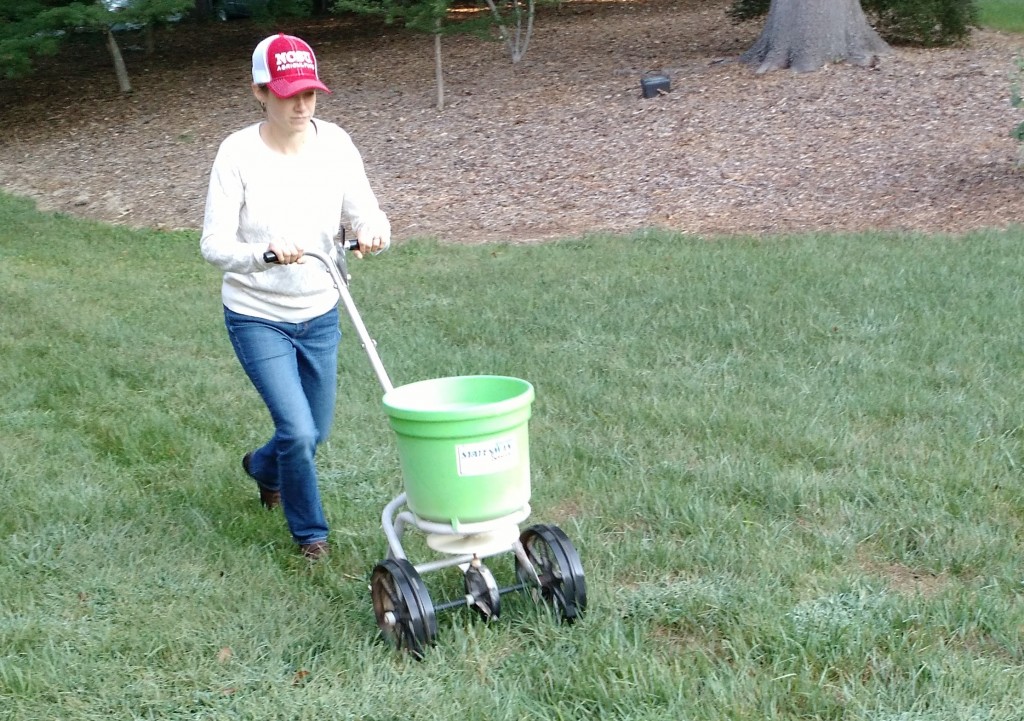From the Vine – Fall Lawn Care
go.ncsu.edu/readext?878355
en Español / em Português
El inglés es el idioma de control de esta página. En la medida en que haya algún conflicto entre la traducción al inglés y la traducción, el inglés prevalece.
Al hacer clic en el enlace de traducción se activa un servicio de traducción gratuito para convertir la página al español. Al igual que con cualquier traducción por Internet, la conversión no es sensible al contexto y puede que no traduzca el texto en su significado original. NC State Extension no garantiza la exactitud del texto traducido. Por favor, tenga en cuenta que algunas aplicaciones y/o servicios pueden no funcionar como se espera cuando se traducen.
Português
Inglês é o idioma de controle desta página. Na medida que haja algum conflito entre o texto original em Inglês e a tradução, o Inglês prevalece.
Ao clicar no link de tradução, um serviço gratuito de tradução será ativado para converter a página para o Português. Como em qualquer tradução pela internet, a conversão não é sensivel ao contexto e pode não ocorrer a tradução para o significado orginal. O serviço de Extensão da Carolina do Norte (NC State Extension) não garante a exatidão do texto traduzido. Por favor, observe que algumas funções ou serviços podem não funcionar como esperado após a tradução.
English
English is the controlling language of this page. To the extent there is any conflict between the English text and the translation, English controls.
Clicking on the translation link activates a free translation service to convert the page to Spanish. As with any Internet translation, the conversion is not context-sensitive and may not translate the text to its original meaning. NC State Extension does not guarantee the accuracy of the translated text. Please note that some applications and/or services may not function as expected when translated.
Collapse ▲Lawns in Sampson County are suited to warm season turf grasses such as Bermuda, Centipede, St. Augustine, and Zoysia grass species. These warm season grasses thrive in our hot and humid climate, but are stressed when they begin to transition into the dormant winter season. Factors that stress lawns are drought/flood, shorter days, cooler night time temps, and pests. This stress may not be visible until next season when your yard has delayed green-up, uneven growth, thin or bare spots, or dead patches. To help promote your lawns health now, and for next season, there are several things that you should and should not do this fall.
If you did not collect a soil sample this season, the fall is a great time to get this task done. Collect 15-20 soil cores from random areas in your lawn 4 inches deep. Mix all the sub samples together to create a composite sample that is representative of your lawn. Fill a soil sample box from your composite sample and complete the correct paperwork. Bring your soil samples to the Extension office for delivery to the NC State Soil Lab. Soil sample test kits are available at the Extension Office for free. Make sure to collect your sample before Thanksgiving to avoid having to pay peak season fees to the NCDA&CS.
Don’t fertilize your lawn with any nitrogen product until May of next year. Nitrogen encourages leaf growth that can be damaged by frost or early freezes. This damage can increase pest pressure and stunt your lawn next year. You can and should add Potassium to your lawns in the fall in the form of potash. Fertilize with 1 pound of potash per 1,000 square feet. One pound of potash can be applied by using 1.5 pounds of muriate of potash (0-0-60) is the easiest to find around here, 2.5 pounds of 0-0-41, 2 pounds of potassium sulfate (0-0-50), or 5 pounds of sul-po-mag (0-0-22) per 1,000 square feet. This potassium application will help prevent damage to warm season grasses from the stresses of winter and strengthen the root system of the lawn. If you have white grub issues, August and September is the optimal time to control them. Milky spore can be applied to the lawn as a biological control that is slow to start, but lasts up to 30 years. Quicker acting products include carbaryl, bifenthrin, and malathion. Fire ants should be managed by using the 2-step method of baits followed by mound drenches.
Weed control is an area where you can have great success. A preemergent application made after Labor Day, and another made near Thanksgiving can keep your yard free of winter annual weeds such as lawn burweed, chickweed, annual bluegrass, dandelions, cudweed, clovers, plantains, and henbit. Apply products with the active ingredients pendimethalin, benefin, trifluralin, prodiamine, or oryzalin. These products create a weed ‘barrier’ that will stop weeds from growing once they germinate. For existing weeds, you can apply products such as Speedzone, Speedzone southern, Celcius, or Imazaquin to all types of lawns.
For more information on fall lawn care, contact the Extension Master Gardener℠ Volunteers of Sampson County at (910) 592-7161.
Disclaimer: The use of brand names and any mention or listing of commercial products or services in this publication does not imply endorsement by North Carolina State University nor discriminate against similar products or services not mentioned.




